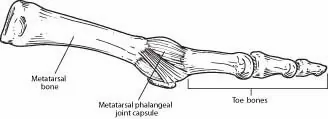Common Toe injuries
- Foot Body Sole
- Aug 16, 2020
- 3 min read
Fracture
What is this ?
A toe fracture is a break in a bone in the toe. A fracture usually occurs when a trauma has occurred to the toe, for instance stubbing it on the end of the bed. A stress fracture however can occur over time and the pain can be of a gradual onset. To confirm if you have a fracture in your toe scans will be sent for to confirm.
Signs and symptoms
Dull, aching, very localised pain within the foot.
Inability to stand or walk without significant pain.
Pain when resting.
Bruising and/or swelling through the affected structure.
Tips
Rest, ice, compress, elevate.
What can a podiatrist do to help?
Moon boot, if pain is severe, will offload the affected structures.
Rehabilitation to restore strength and function in the feet once the fracture has healed.
Laser therapy/shockwave (if tolerable)/ultrasound to improve healing.
Provide taping and padding to help offload the area.
Capsulitis
What is this ?
Ligaments surround the base of the joint to form a capsule, this is one of the things that helps to keep the join in place. Capsulitis is when these ligaments become inflamed.
Signs and symptoms
Pain through toe joint.
Pain around joint line of big toe or along the top of the toe joint.
On and off shooting pain along the toe joint.
Swelling and redness in the area of the toe joint.
Tips
Heat packs to soothe the joint.
Avoiding high heels more than approx 2-3 cm.
Over the counter anti inflammatory medicines.
What can a podiatrist do to help?
Laser therapy and or ultrasound therapy to initiate healing response in the joint,
Joint mobilisation with low level shockwave to increase range of motion of the joint and functionality.
Offloading the area with padding, taping or orthotics.
Flexor plate tendon tear
What is this ?
The plantar plate is a Fibro-Cartilaginous structure within the foot. It's role to help stabilize the toe joints within the foot. It is attached to the joint capsule that was discussed above. These injuries tend to be an over use injury that has a gradual onset.
Signs and symptoms
Aching or bruising around the joint.
Increased discomfort when walking.
Spreading between the 2nd and 3rd toe.
Can feel like you are walking on bones or a stone.
Clawed toe.
Tips
Avoid high heel or flexible shoes.
Wear stiff soled shoes.
Avoid walking bare foot.
What can a podiatrist do to help?
Padding and taping to help offload the area.
Ultrasound and laser to help improve healing.
Orthotic therapy to help offload the area in the long term.
Footwear advice.
Extensor injuries
What is this ?
The extensor tendons run across the top of the foot. These injuries tend to progress over a period of time.
ADD more
Signs and symptoms
Dull achy pain on the top of your foot that usually increase with walking or running.
Swelling on the top of the foot.
Tips
Wearing shoes which are deep enough.
Make sure that you are not lacing your shoes too tightly
What can a podiatrist do to help?
Ultrasound an laser to help improve healing in the area.
Dry needling to help release trigger points in the extensors.
Tapping to help offload the structures.
Orthotic's to help correct possible issues with bio mechanics.
Does this sound an issue that you have been experiencing?
Contact one of our friendly podiatrists today on 1800 778 316 if you have any questions!



















Comentarios